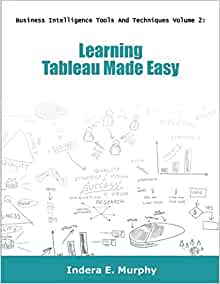
In this article, we'll compare the benefits and disadvantages of online education compared to traditional schooling. Learn about the advantages of learning online, such as the freedom of class schedules and the lack in social interaction. We'll also be discussing the downsides of online classes, such as isolation and introversion, and possible pitfalls. The decision is ultimately yours. You will learn so much from each, regardless of which route you choose.
Online school has many advantages over traditional schools.
Traditional schools may require students to take bus trips, sit at their desks, or participate in group projects. Students attending online schools, on the other hand, may not have to face such obstacles. Students who attend online schools may be able to concentrate because they are less distracted than those on campus. Although traditional schools are more expensive than online, there may be some advantages. Online schools may be the best option for some students.

Comparison of online and traditional schools in terms of costs
Online schools are much more affordable than traditional schools when it comes to college costs. It is important to note that costs can vary depending on the school you choose. Private universities with large enrollments will charge as much as $50k per year in tuition. This does not include living expenses, or the cost for books. Students are eligible for scholarships and other financial aid in order to offset the tuition fees. Traditional colleges require reliable computers and a commitment to work for more than 30 hours per semaine.
Online classes offer flexibility
These classes have a significant advantage because they can be taken online. The flexibility of online classes is much better than traditional classroom learning. Students can attend class at their convenience. Students also don't need to travel to school and do not have to worry about the quality. Online learning allows them to study at their convenience from the comfort of home. Furthermore, online classes offer customized coursework. This is especially true for undergraduate Virtual Schools. Also, shy students can join in class discussions and feel at home in the environment.
Isolation of introverts
You might wonder if traditional school is the right choice for you if your introvert nature makes you uncomfortable. If you are an extrovert looking for a change of scenery, then you're in the right place. Traditional schools are notorious for making introverts feel out of place. Online schools, on the other hand, are thriving communities that embrace and encourage differences.

Online classes at a fraction of the cost
Although online classes have many benefits, some students will need to spend more. Online college algebra courses can save students more than $1,000. The online course will save students money by not having to purchase textbooks and pay for transportation from class to class. Additionally, students don't need to buy physical textbooks. They can instead purchase digital textbooks, which can help them save even more.
FAQ
How can I get started in eLearning?
It's a good idea to begin small if you don't know how to create online classes. Try creating a short tutorial or quiz.
After you have learned this skill, you can move onto more complicated projects. It's a good idea to learn HTML before you start creating lessons with pre-built templates.
What is eLearning all about?
E-learning can be time-consuming and requires effort. You also need to understand how people learn. Learning should be based on the learners' goals.
It must be relevant and interesting. Learning materials should contain visual aids such images, videos animations and interactive elements.
E-learning needs to be entertaining and fun. It should place a strong emphasis on motivation for learners. This includes providing feedback for learners working hard to reach their goals and encouraging them.
What are the advantages of e-learning for students and teachers?
E-learning can lead to better learning outcomes for both students as well as teachers. It also makes it possible to access information anytime and anywhere learners want. E-learning makes it possible for educators to communicate with their students via technology in ways that were not possible before.
E-learning allows teachers to provide individualized instruction and feedback as well as the support student progress. This increases student motivation and engagement. E-learning can be used by teachers to improve communication, collaboration, critical thinking, and other skills. It can be used to improve teaching practices by providing opportunities for self reflection and reflection on the experiences of others.
E-learning makes it possible to cut down on training costs. In order to train students about a topic, teachers will need to purchase materials and books. However, if the same material is available online, then there is no need to purchase these items.
What are some examples of e-learning tools you can use?
Interactive media, such as animation and audio, is the best way to convey learning content.
These media allow learners interaction with the content. They are also more engaging and retain learners.
Online courses are often delivered via websites that contain text, graphics, video, sound, and interactive features.
These courses are available for free or for a nominal fee.
Some examples include:
-
Online courses
-
Virtual classrooms
-
Webinars
-
Podcasts
-
Video tutorials
-
Self-paced eLearning modules
-
Interactive
-
Social networking sites (SNS).
-
Blogs
-
Wikis
-
Discussion forums
-
Chat rooms
-
Email list
-
Forums
-
Quizzes
-
Polls
-
Questionnaires
How much multimedia should an eLearning class contain?
The answer will depend on what you want. If you're looking to quickly deliver information, less may be better. However, if you are looking at delivering training that will help people learn how to do something, then more may be better.
The important thing to remember is that you must be clear about what you expect from your eLearning program. Also, you need to know what your learners expect from the course. This will allow to make sure that your course has enough content to reach your objectives.
Let's take, for instance:
You should include many examples of text documents to help people learn how to use Microsoft Word. However, you should show people many types of Excel spreadsheets if you want them to learn how to use it.
Consider whether you would like to illustrate concepts with images or video.
Video is great for teaching people how to do things, but it's not as good at explaining complex topics. Video is also quite expensive to make. While images are more affordable to produce, they do not convey the same emotional impact as videos.
The bottom line is to think carefully about the end result before designing your eLearning courses.
What is the biggest challenge with online learning
The greatest challenge is keeping students engaged during the course. It is difficult to keep students interested in the lessons you teach. How can they expect to learn anything else? Your students will be more focused if you give them many options. This allows students to pick which modules and chapters they want, how many exercises they want, what tests they want, and which assignments they want.
Does eLearning require an Internet connection?
It all depends on what you are trying to accomplish. It doesn't matter if it's an online course. If you want to access interactive features, such as quizzes and other forms of interaction, you will need to have internet access.
Statistics
- Interestingly, students' participation in online training grew by 142% in the past year alone, indicating how quality education and up-to-date teaching pedagogy are preferred by learners and working professionals to upskill across India. (economictimes.indiatimes.com)
- E-learning is intended to enhance individual-level performance, and therefore intend to use of e-learning should be predicted by a learner's preference for self-enhancement (Veiga, Floyd, & Dechant, 2001). (sciencedirect.com)
- India's PC market clocks 9.2% growth to 3.4 million units in the September quarter (economictimes.indiatimes.com)
- In the 2017 ATD research report Next-Generation E-Learning, 89% of those surveyed said that changes in e-learning require their staff to update or add new skills. (td.org)
External Links
How To
What is the difference between eLearning and traditional teaching methods?
eLearning has existed for a long time. In fact, many schools still teach using the old-fashioned way. There are many advantages to eLearning over traditional methods of teaching. Here are some examples:
-
E-learning is cheaper than traditional methods of teaching.
-
Students can choose to take classes at their own pace.
-
Teachers don't have as much pressure to get students up and running before class begins.
-
Teachers can create multiple versions of the course to teach slightly different concepts.
-
Learning can be done through chat rooms or discussion boards. Learners can also interact with one other and ask questions.
-
Learners can work together on assignments and projects.
-
The classroom can be used to view videos and presentations by learners.
-
Online courses are available 24/7, seven days a week.
-
Learners can study anywhere, anytime.
-
Learners can always go back and review previous lessons.
-
Learners can keep track of all their progress throughout the year.
-
Students can receive instant feedback about their performance.
-
Learners can complete assignments and projects at their own pace. They can even submit them later if they wish.
-
Learners can download files containing notes, images, or other materials.
-
Students can print out copies of assignments and handouts.
-
Students can save money by purchasing books and supplies only once, instead of buying them for every term.
-
Learning can be more effective when learners study alone.
-
Learning partners can be found in the form of learners who are studying the same subject.
-
Learners can learn from each other and share their knowledge.
-
By reading blogs and articles, learners can learn new things.
-
Students can search for solutions to specific problems.
-
Learners have the ability to create their own content.
-
Students can get help from peers and tutors.
-
Learners can make friends with people who share similar interests.
-
Learners can improve their writing skills.
-
Learners can learn how to solve problems creatively.
-
Learners can practice public speaking.